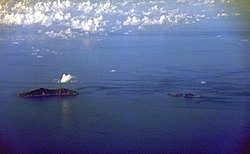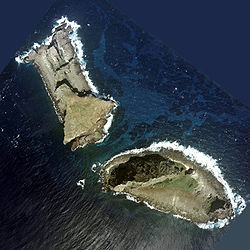| Disputed islands | |
|---|---|
 Location of the islands (yellow rectangle and inset) | |
 | |
| Other names | Diaoyu Islands / Diaoyutai Islands / Pinnacle Islands |
| Geography | |
| Location | Pacific Ocean |
| Coordinates | 25°44′42″N123°29′06″E / 25.74500°N 123.48500°E |
| Total islands | 5 + 3 rocks (reefs) |
| Major islands |
|
| Area | 7 km2 (2.7 sq mi) |
| Highest elevation | 383 m (1257 ft) |
| Administration | |
| City | Ishigaki, Okinawa |
| Claimed by | |
| Township | Toucheng Township, Yilan County, Taiwan |
| County | Yilan County, Taiwan |
| Senkaku Islands | |||||||||||||
|---|---|---|---|---|---|---|---|---|---|---|---|---|---|
| Chinese name | |||||||||||||
| Traditional Chinese | 釣魚島及其附屬島嶼 | ||||||||||||
| Simplified Chinese | 钓鱼岛及其附属岛屿 | ||||||||||||
| Literal meaning | Diaoyu Island and its affiliated islands | ||||||||||||
| |||||||||||||
| Taiwanese name | |||||||||||||
| Traditional Chinese | 釣魚臺列嶼 | ||||||||||||
| Simplified Chinese | 钓鱼台列屿 | ||||||||||||
| Literal meaning | Diaoyutai / Tiaoyutai Islands | ||||||||||||
| |||||||||||||
| Japanese name | |||||||||||||
| Hiragana | せんかくしょとう | ||||||||||||
| Shinjitai | 尖閣諸島 | ||||||||||||
| |||||||||||||
The Senkaku Islands, [a] known as the Diaoyu Islands [b] in China and the Diaoyutai Islands [c] in Taiwan,are a group of uninhabited islands in the East China Sea,administered by Japan. They were historically known in the Western world as the Pinnacle Islands. The islands are located northeast of Taiwan,east of China,west of Okinawa Island,and north of the southwestern end of the Ryukyu Islands.
Contents
- Names
- History
- Early history
- Control of the islands by Japan and the US
- Geography
- Geology
- Wildlife
- Plants
- Animals
- Sovereignty dispute
- United States' position
- Post-2012 escalation
- See also
- Notes
- Footnotes
- References
- Further reading
- External link
The islands are the focus of a territorial dispute between Japan,China and Taiwan. [9] China claims the discovery and ownership of the islands from the 14th century,while Japan maintained ownership of the islands from 1895 until its surrender at the end of World War II. The United States received administrative rights of the islands from Japan under the Treaty of San Francisco and administered the islands as part of the United States Civil Administration of the Ryukyu Islands from 1945 until 1972,before returning them to Japanese control under the Okinawa Reversion Agreement. [10] The discovery of potential undersea oil reserves in 1968 in the area was a catalyst for further interest in the disputed islands. [11] [12] [13] [14] [15] Despite the diplomatic stalemate between China and Taiwan,both governments agree that the islands are part of Taiwan as part of Toucheng Township in Yilan County. Japan administers the Senkaku islands as part of the city of Ishigaki in Okinawa Prefecture. It does not acknowledge the claims of China nor Taiwan,but it has not allowed the Ishigaki administration to develop the islands.
As a result of the dispute,public access to the uninhabited islands is restricted;Japan’s central government has denied landing requests even from local authorities. [16] Although the islands are administered by Japan since 1895,a continuity interrupted only by US administration from 1945 to 1972,this long-standing status quo has been increasingly challenged by China since 2010s; [17] [18] [19] Since the early 2010s,China Coast Guard have frequently entered the surrounding waters of the islands,prompting responses and exchanges of warnings with the Japan Coast Guard. [20] [21] China has also announced territorial-sea baselines (2012) and established an East China Sea ADIZ (2013),all of which are contested by Japan. [22] [23] [24] The United States,which returned administrative right of the islands to Japan in 1972,takes no position on the ultimate sovereignty but acknowledges that the islands are under Japanese administration and are covered by the US–Japan security treaty. [25] [26] Recent US–Japan statements also refer to Japan’s longstanding administration and oppose any unilateral actions that seek to undermine it . [27]
The Senkaku Islands are important nesting sites for seabirds,and are one of two remaining nesting sites in the world for the short-tailed albatross,alongside Tori-shima,Izu Islands. [28]














